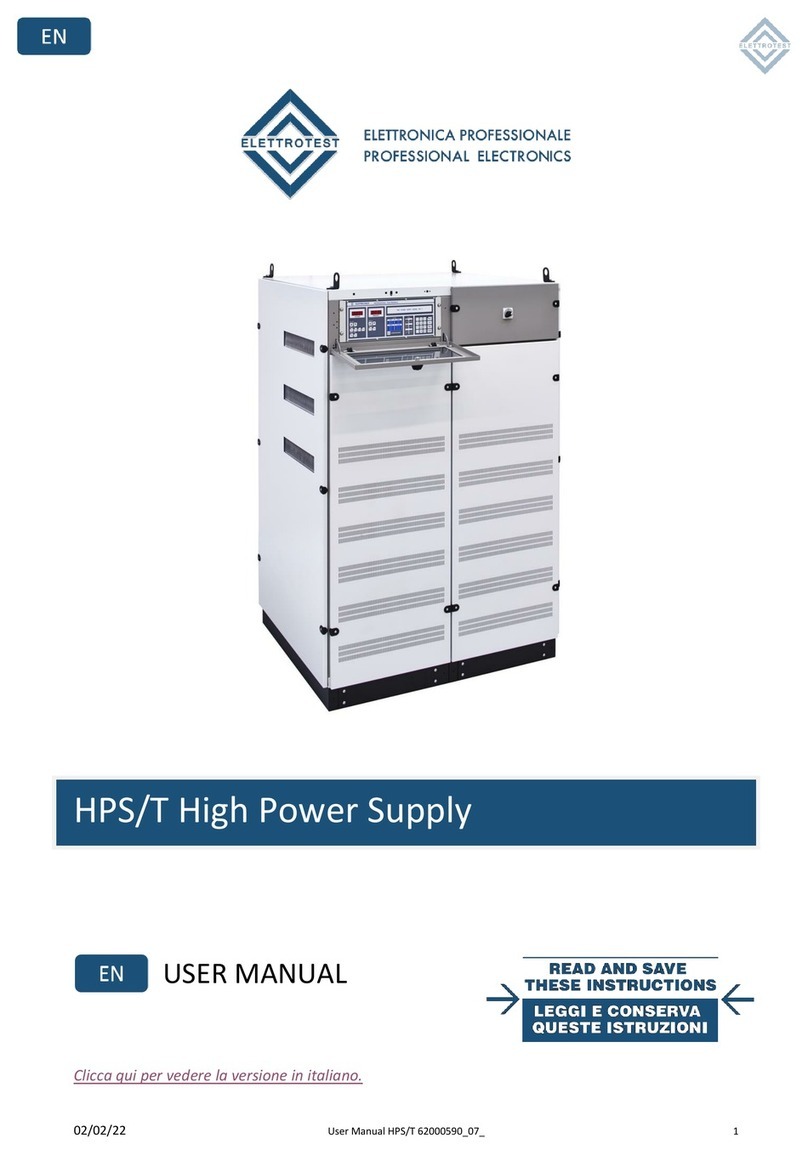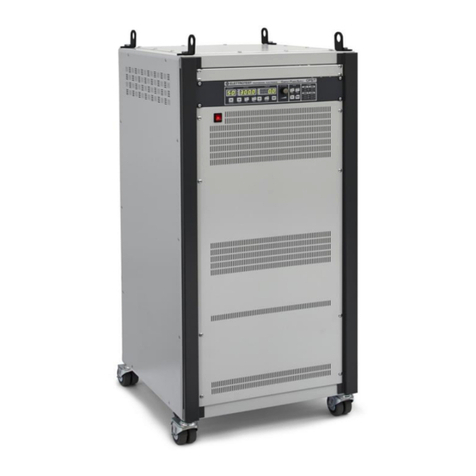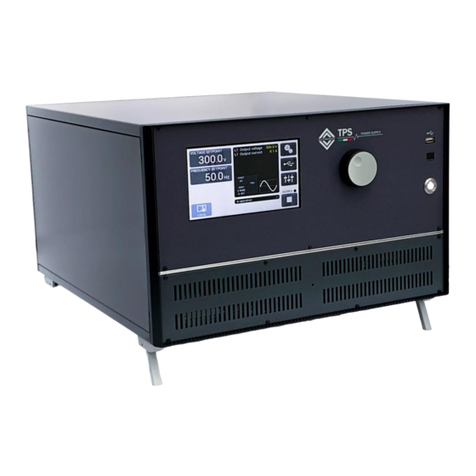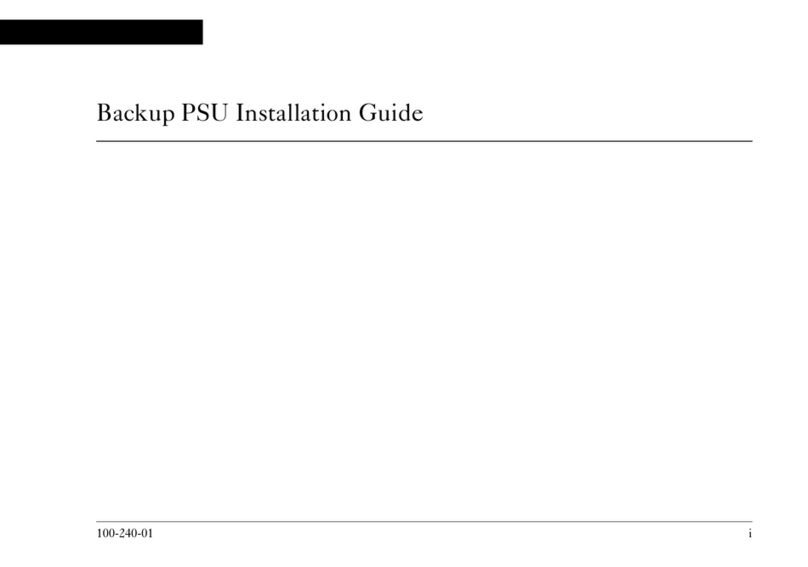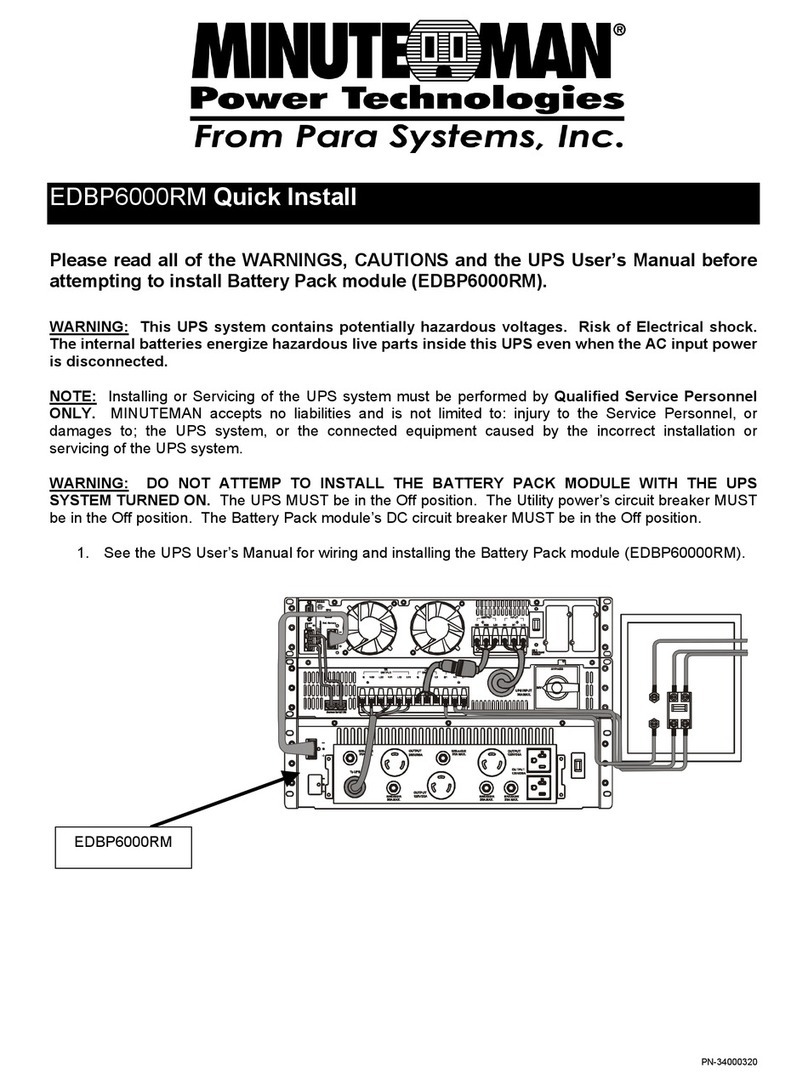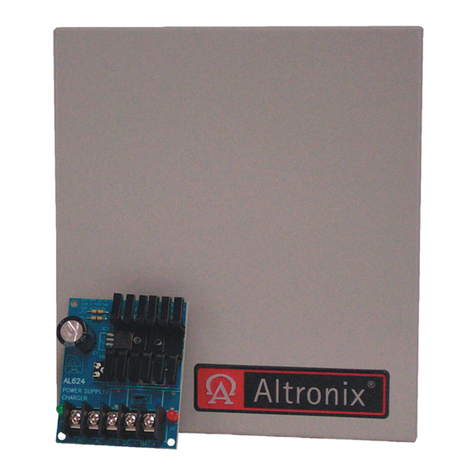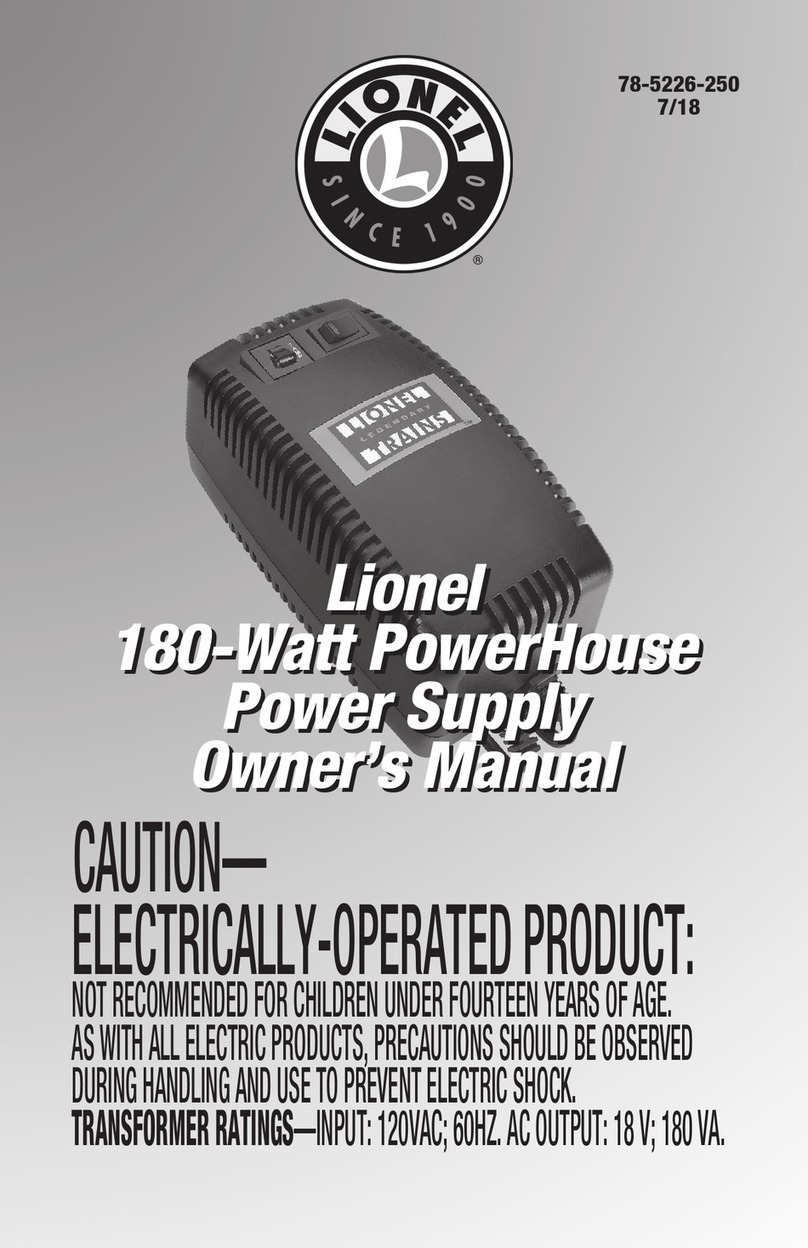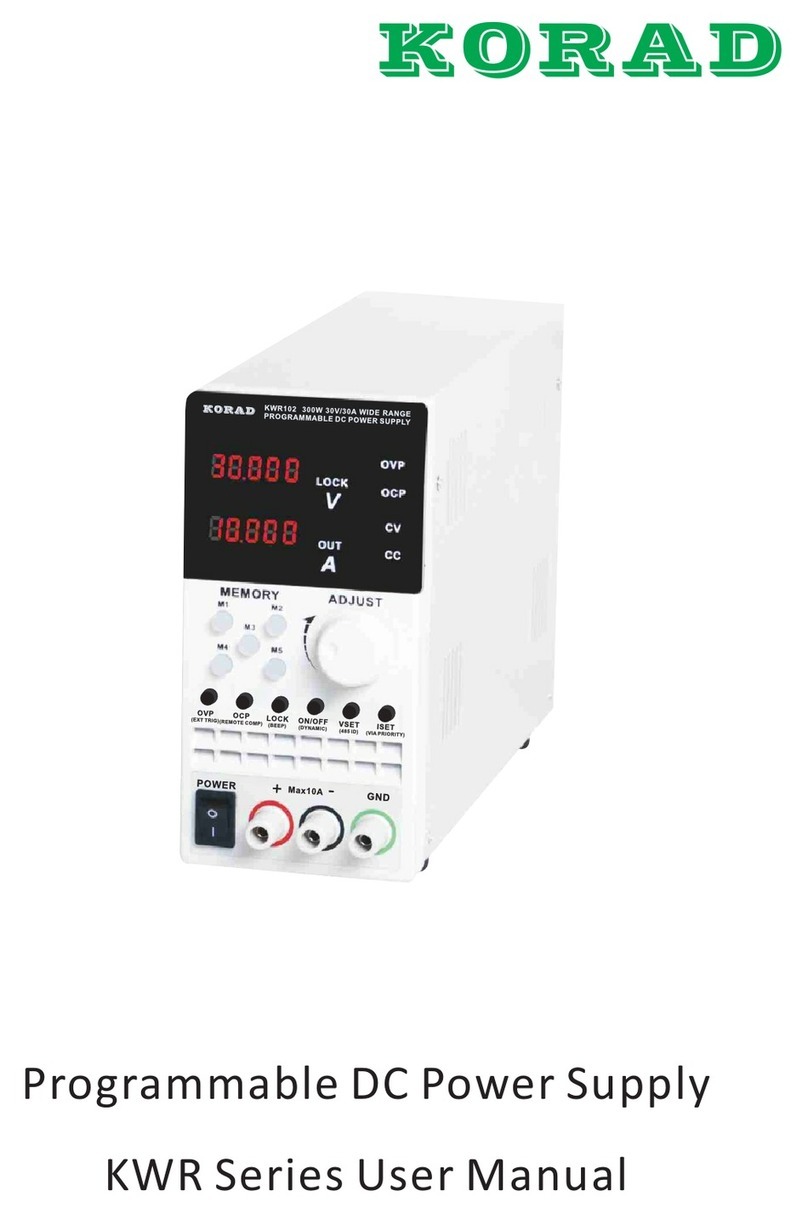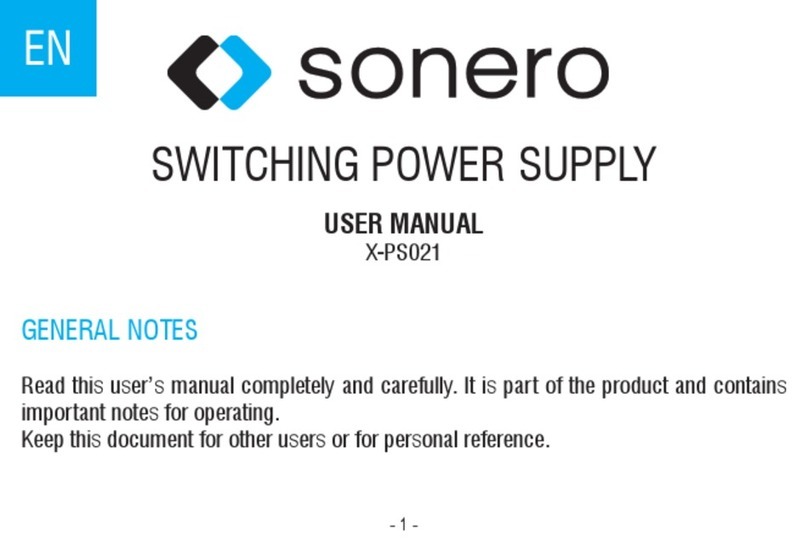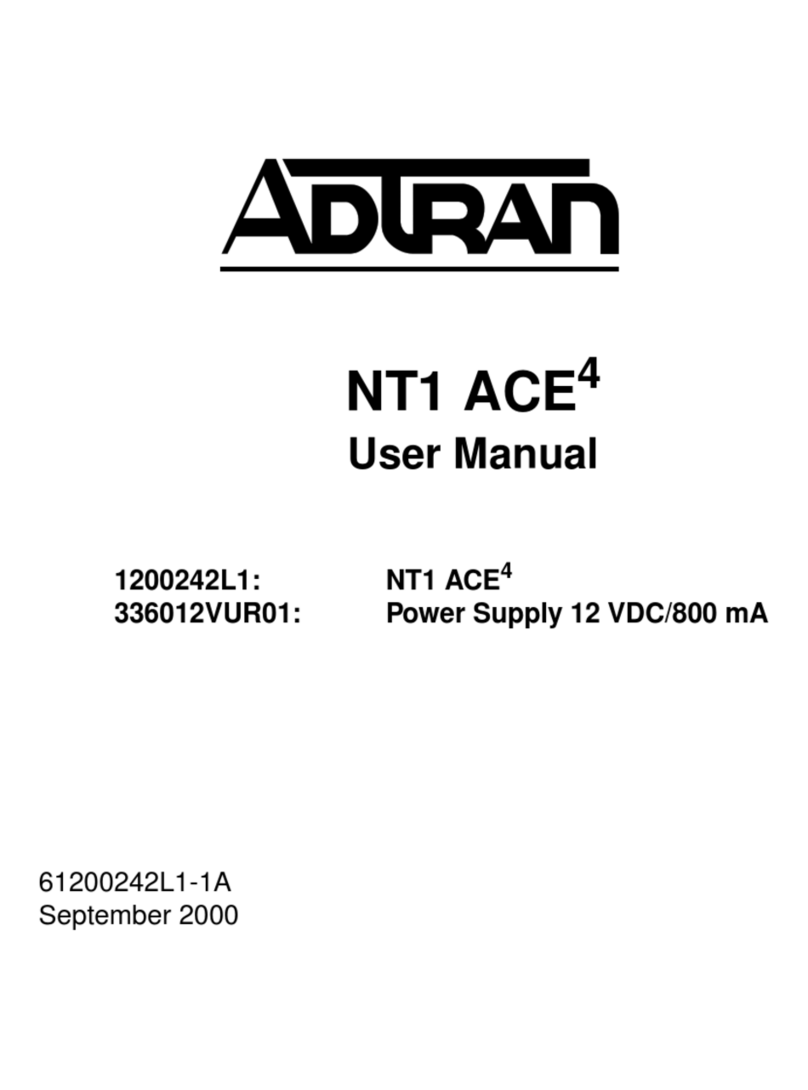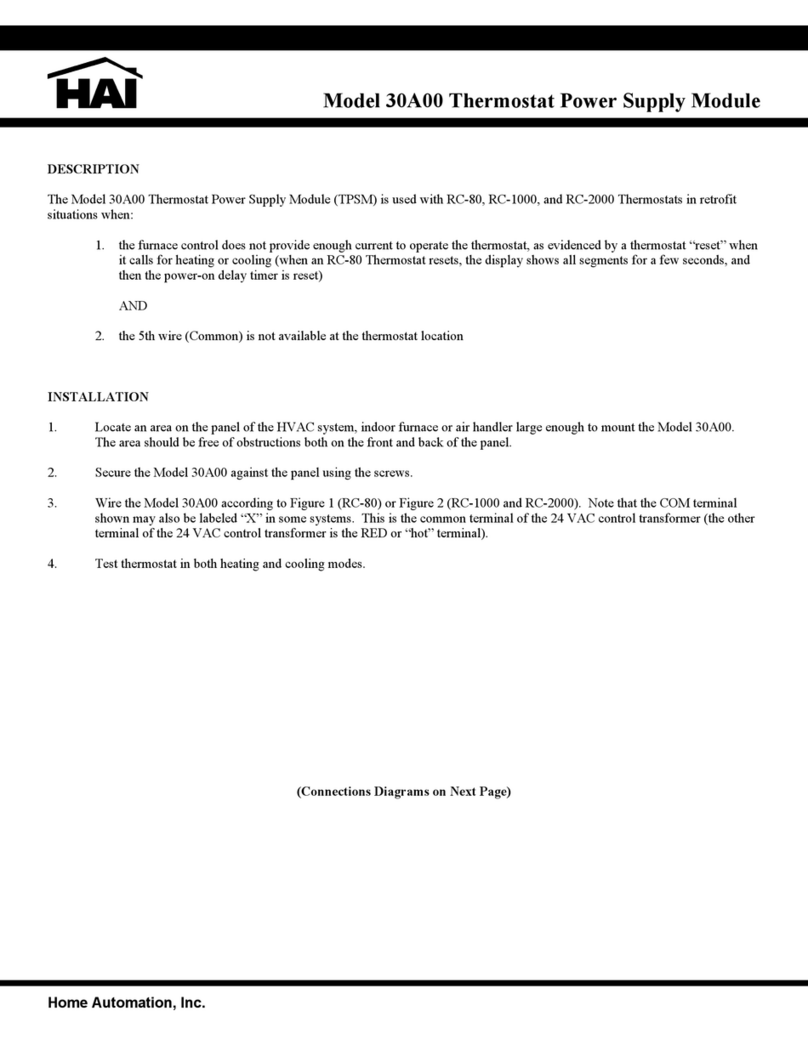Elettrotest RPS/T 20kVA User manual

EN
02/08/22 User Manual RPS/T 20kVA 62000587_02_ 2
RPS/T Models covered in this manual:
Model
Code
RPS/T 20kVA
99113553
This manual is written from RPS/T firmware version RPS_NW96_00.
Please check the latest manual version at www.elettrotestspa.it
To consult older manual versions, please contact our support at

EN
02/08/22 User Manual RPS/T 20kVA 62000587_02_ 3
Document list:
This manual is completed by a list of documents, useful to understand all the features of your
RPS/T.
Scan the QR-code or click on the link to directly download the documents.
Documents
Description
Link
QR-code
User Manual
Latest manual version
Manual
Brochure
Brochure for all the RPS/T models
Brochure
RPS protocol
Elettrotest
Describes how the Elettrotest remote
communication protocol works.
Elettrotest
Protocol
PS Interface
Software for remote use.
PS_interface
Driver LabView
Manual and LabView Drivers for PS-
interface
Driver
LabView

EN
02/08/22 User Manual RPS/T 20kVA 62000587_02_ 4
Elettrotest Spa
P,zza R.Riello 20/B
45021 Badia Polesine (RO)
Italy
+39 042553567
www.elettrotestspa.it
After sale support
Thank you for purchasing the RPS/T generator.
RPS/T is a three-phase generator that provides a perfectly sinusoidal and stable voltage. The
voltage value can be adjustable either in frequency and amplitude.
RPS/T combines the advantage of the power line, the variac and the rotary converter, without
having their shortcomings.
Responsability:
Elettrotest disclaims any responsibility for damage to people or things
caused by an improper use of its products.
Mandatory
-Verify voltage, power and frequency compatibility between RPS/T range and electrical
specification of equipment under test (EUT).
-Electrical components of the system must be suitable for the rated voltage and current of RPS/T
model
-The electrical components, which by construction cannot support external influences (of the
generator in all its range), can only be used on condition that adequate additional protection has
been provided with automatic disconnection protection.
Notes:
This manual lists precautions and information about operating procedure of device.
The content of this manual is subject to change without prior notice because of continuing
improvements on the instrument’s
Should you have any questions or find any error please contact us by email.
Copying or reproducing all or any part of the contents of this document is strictly
prohibited, without Elettrotest permission
Version:
This manual is written for RPS/T firmware version RPS_NW96_00 and higher

EN
02/08/22 User Manual RPS/T 20kVA 62000587_02_ 5
SAFETY WARNINGS
The manufacturer urges users to read the user manual for our products before installation.
The installation must be carried out by qualified technical staff. The non-observance of the
warnings in this manual can cause electric shocks, even fatal ones.
Please find some general safety warnings below.
•This equipment must be connected to the mains supply using the appropriate safety
devices.
•RPS/T must be connected to safety ground through the correct connections. The non-
observance or the degradation of this earth connection can lead to electric shocks, even fatal
ones. As regards the correct connection modes, please refer to the information contained in
paragraph 4.
•Disconnect RPS/T from the mains before any work on the equipment and on the connected
power loads.
•Before touching the load or the output connector make sure that the power supply on the
device has been disconnected for at least 20 minutes. This is the time necessary in order for the
capacitors inside the device to discharge. The non-observance of this discharge time can lead to
electric shocks, even fatal ones.
•Avoid heavy shocks to the equipment (especially during transport) or exposure to extreme
weather conditions.
•Any damage to the product due to transportation, incorrect installation or improper use is
not covered by the guarantee supplied by the manufacturer.
•Do not use the equipment in explosive environments or in the presence of dust, acids or
corrosive and/or inflammable gases.
•Tampering with or dismantling any component in the equipment will void the warranty
automatically.
•Do not operate or store under conditions where condensing may occur or where
conductive debris may enter in the case.
•Keep the ventilation holes on the front and rear free from obstruction.
•Do not make dielectric strengths test on the input or output of the equipment. Contact
Elettrotest if you need to do specific test
ELECTRIC RISK
There are dangerous voltages inside RPS/T and over the output connector.
The non-observance of the warnings suggest in this manual can lead to electric
shocks, even fatal ones.
OVERHEATING RISK

EN
02/08/22 User Manual RPS/T 20kVA 62000587_02_ 6
In the case of a ventilation system failure, the metal parts of the inverter may reach high
temperatures (in some cases higher than 70°C).
DISPOSAL
INFORMATION FOR USERS ON THE CORRECT HANDLING OF WASTE
ELECTRICAL AND ELECTRONIC EQUIPMENT (WEEE)
In reference to European Union directive 2012/19/EU issued on 24 July 2012 and the related
national legislation, please note that:
•WEEE cannot be disposed of as municipal waste and such waste must be collected and
disposed of separately;
•the public or private waste collection systems defined by local legislation must be used. In
addition, the equipment can be returned to the manufacturer at the end of its working life when
buying new equipment;
•the equipment may contain hazardous substances: the improper use or incorrect disposal
of such may have negative effects on human health and on the environment;
•the symbol (crossed-out wheeled bin) shown on the product or on the packaging and on
the instruction sheet indicates that the equipment must be disposed of separately;
•in the event of illegal disposal of electrical and electronic waste, the penalties are specified
by local waste disposal legislation.

EN
02/08/22 User Manual RPS/T 20kVA 62000587_02_ 7
INDEX
1. INTRODUCTION............................................................................................................................9
1.1. MAIN FEATURES ....................................................................................................................9
1.1.1. Output voltage ...............................................................................................................9
1.1.2. Output frequency...........................................................................................................9
1.1.3. User interface...............................................................................................................10
2. MODELS......................................................................................................................................11
2.1. MECHANICAL DRAWINGS....................................................................................................12
2.1.1. RPS/T 20K 15K30S ........................................................................................................12
3. NOTES FOR USERS......................................................................................................................13
3.1. SWITCHING ON....................................................................................................................13
3.2. RANGE SETTING...................................................................................................................13
3.3. FREQUENCY .........................................................................................................................13
3.3.1. Frequency setting.........................................................................................................13
3.4. MODE MENU.......................................................................................................................13
3.4.1. Voltage reaction...........................................................................................................13
3.4.2. Output type..................................................................................................................14
3.4.3. Output Relay ................................................................................................................14
3.4.4. Continuous or INRUSH mode.......................................................................................14
3.5. ALARMS ...............................................................................................................................14
3.5.1. Supply alarms...............................................................................................................14
3.5.2. System alarms..............................................................................................................15
3.5.3. Current alarm...............................................................................................................15
3.5.4. Voltage alarm...............................................................................................................15
4. INSTALLATION............................................................................................................................16
4.1. GENERAL NOTES..................................................................................................................16
4.1.1. INSPECTION..................................................................................................................16
4.1.2. Line Connection ...........................................................................................................16
4.2. PROTECTIONS......................................................................................................................17
4.2.1. RCD Protection.............................................................................................................17
4.2.2. Magneto-Thermic protections.....................................................................................17
4.2.3. Protections Wiring Diagram.........................................................................................18
4.3. WIRING DIAGRAM...............................................................................................................19
4.3.1. 2-WIRES configuration with three single phase transformers ....................................19
4.3.2. 4-WIRES configuration with three single phase transformers ....................................20
4.3.3. 4-WIRES configuration with one three phase transformer ........................................21
4.3.4. 4-WIRES configuration with one three phase transformer ........................................22
4.3.5. Wiring diagram of double range and single phase configuration with three single
phase transformers....................................................................................................................23
4.3.6. Wiring diagram of double range with one three phase transformers .......................24
4.4. INSTALLATION NOTE ...........................................................................................................25
4.4.1. RPS/T 20K 15K30S ........................................................................................................25
5. REMOTE CONTROL.....................................................................................................................26
5.1. SERIAL REMOTE CONTROL ..................................................................................................26
5.1.1. RS232 Serial cable ........................................................................................................26
5.2. EXISTENCE TABLE.................................................................................................................27
6. ACCESSORIES..............................................................................................................................28
6.1.1. RPS/T 20K 15K30S ........................................................................................................28

EN
02/08/22 User Manual RPS/T 20kVA 62000587_02_ 8
7. inrush limit current ....................................................................................................................28
8. Voltage frequency ratio .............................................................................................................29
9. Service and maintenance...........................................................................................................30
9.1. MAINTENANCE / CLEANING................................................................................................30
9.1.1. Scheduled maintenance...............................................................................................30
9.2. ALARMS DIAGNOSIS AND REPAIRS .....................................................................................30
9.3. BASIC TROUBLESHOOTING..................................................................................................31
9.3.1. Overvoltage/Undervoltage alarms ..............................................................................31
9.3.2. Overtemperature alarm...............................................................................................31
9.3.3. Inverter alarm ..............................................................................................................32
9.3.4. Max DV OUT alarm.......................................................................................................32
9.3.5. Limit IOUT alarm ..........................................................................................................32
10. GUARANTEE ............................................................................................................................33
11. REVISION INDEX ......................................................................................................................33

EN
02/08/22 User Manual RPS/T 20kVA 62000587_02_ 9
1. INTRODUCTION
RPS/T is a power source that supplies sinusoidal stable voltage. Its output voltage is adjustable in
frequency and amplitude.
RPS/T has an isolated output thanks to a special isolating transformer at constant power. This
transformer allows to have always the maximum power in any application, keeping the complete
insulation from the electrical line. (the transformer is not supplied with the RPS/T)
RPS/T has to be controlled remotely.
1.1. MAIN FEATURES
1.1.1. Output voltage
The output voltage is guaranteed perfectly sinusoidal, with a distortion of less than 0.6 %
regardless of the load.
The value of output voltage is kept perfectly stable within 0.1 % f.s. regardless of the load.
RPS/T is also able to compensate for possible voltage drops on the output wires, ensuring the
exact amount of voltage you want on the load.
The load that RPS/T is able to drive can vary from the pure capacity to the pure inductance; not
only, but also up to non-symmetrical current loads, as for instance a single halfwave rectifier.
The output voltage is adjustable with continuity from zero to full scale of each range.
RPS/T can in fact provide the nominal power at various full scales and this allows the RPS/T to
adapt himself to the disparate needs of the user, without having heavy limitations on the output
current.
Furthermore RPS/T is capable to keep the voltage stable also with time variable loads, as for
example the pulsating loads.
In fact RPS/T recovers the distortion of the waveform within 0.6 % and the amplitude of the
voltage within 0.3% in less than half period.
RPS/T can bear a shortcircuit for an indefinite time without suffering any consequence.
1.1.2. Output frequency
RPS/T allows the regulation of the output frequency from 40Hz to 80Hz.
This output frequency can be regulated with continuity within the above-mentioned range of
frequencies and it has a stability of 0.01% with regards to the set frequency.
RPS/T also allows to synchronize the output frequency with the frequency of the supply line; this
synchronization is obtained both in frequency with line.
This allows isofrequency output, with regard to the supply line, but with a completely insulated
output and with a far superior voltage stability.
It must be remarked that, in three phase version, trough remote interface, it is possible to set a
variable phase delay on all the three outputs, this is useful for example, to study single phase

EN
02/08/22 User Manual RPS/T 20kVA 62000587_02_ 10
motor with starting capacitor, or in all those cases where a different phase displacement than
three phase is required.
The resolution of phase setting is 0,088° (12 bits on 360°).
1.1.3. User interface
RPS/T can be managed from an host computer control, thus allowing to perform tests
automatically.
RPS/T allows various usage selections: working range, wires drop compensation, working
frequency, synchronization of the output frequency with the power line.
RPS/T gives the user clear information on the status of the output.
It is monitored both the set voltage and the set frequency and the output voltage is read with a
precision of 0.3% f.s.
The user is also warned in case of overcurrent obtainable by the RPS/T, or in case of high loss in
the wires, that should not exceed 5% of the set voltage.
We underline again that RPS/T automatically limits the maximum allowed current, avoiding
damages to the equipment; in that in this case it is not guaranteed the precision of the output
waveform neither the accuracy of the output voltage.

EN
02/08/22 User Manual RPS/T 20kVA 62000587_02_ 11
2. MODELS
All RPS/T models characteristics are shown in the table hereunder.
RPS/T 15K45S (20K)
Code
99113553
Configuration
Continuous
Inrush
Power
20KVA
15KVA/45KVA
Output
1phase / 3phase
Characteristic
Isolated5)
Voltage
Range
150V/300V1)
Accuracy
<0.5%. f.s.
Distortion
<0.6%2)
Stability of the output voltage
<0.1% f.s.
Recovery time of the waveform
<10ms
Maximum Compensated drop
5% s.v.
Recovery-time of drop on wires
<200ms.
Output voltage resolution
0.025% f.s.
Maximum current single phase
Configuration
Continuous
Inrush
Range
150V
300V
150V
300V
RMS continuous 2)
133A
66.5A
100A
50A
Inrush Current (3 seconds)2)
No Inrush
300A
150A
Maximum current three phase
Configuration
Continuous
Inrush
Range
150V
300V
150V
300V
RMS continuous 2)
44.4A
22.2A
33.3A
16.7A
Inrush Current (3 seconds)2)
No Inrush
100A
50A
Frequency
Output frequency range
40Hz3) - 80Hz4)
Range of synchronization
45Hz - 65Hz
Frequency resolution
0.02Hz
Frequency precision
100ppm
Supply
Input supply
400Vac ± 10% 3Ph
Without neutral
Maximum Input current
50A
Input Frequency
50Hz-60Hz
Other
Size (H : W : D)(mm)
8U : 84TE: 500
Weight
50Kg
Protections
OVP;UVP;OTP
Operation Temperature Range
0-35°C
RS232
YES
RS485
OTION
LAN
OPTION
1) Other Range on request
2) With Resistive load
3) It is possible on remote interface to set 10Hz but the maximum possible voltage decreases
4) You can set up 320Hz by serial command, but with derating of performance and maximum voltage
5) With not supplied transformer
f.s. stands for full scale s.v. stands for set value

EN
02/08/22 User Manual RPS/T 20kVA 62000587_02_ 12
2.1. MECHANICAL DRAWINGS
2.1.1. RPS/T 20K 15K30S
4
3
2
All measures are on mm
1 –General switch (Front)
2 –Grill for input air flow (Front)
3 - Grill for output air flow (Rear)
4 –Panel for connection
1
2
Vista Frontale / Front View

EN
02/08/22 User Manual RPS/T 20kVA 62000587_02_ 13
3. NOTES FOR USERS
3.1. SWITCHING ON
As soon as RPS switches on, through the switch placed on the control panel of the machine, it
makes different cycles of test. In case of bad working the test stops and the machine sends the
type of alarm checked (see at the voice alarms). When the test ends RPS is set to 0 Volt in the
range 300 Volt, 50 Hertz and regulation on the output terminals (2 WIRE). After the appearing of
these indications on the host control, RPS is ready to work.
Caution: The front switch is not a security switch, It opens only the three phase power line but
the neutral stays connected. High dangerous voltages remain inside the machine.
3.2. RANGE SETTING
The ranges on RPS allow to make use of the full power output at different voltages.
The maximum output power changes according to the nature of the connected load; in case of
resistance loads the power is nominal, in case of pure inductive loads the power increases, in case
of pure capacity loads the power decreases.
There are two different ranges that you can manage with the output voltage of the external
transformer, you have not to make modify if you have 150V or 300V. Otherwise you have to
use TV on the sense connector
When the range is changed, the output voltage goes down slowly till zero, then the output power
is switched off; after about 15 seconds the output is switched on.
3.3. FREQUENCY
The output frequency can have two references: the first one is a inner frequency reference with a
precision of 0.01%, the second one is the frequency line.
At turn on RPS is connected to the internal reference at 50Hz.
3.3.1. Frequency setting
The output frequency of RPS/T can change between 10 and 80 Hz, under 50Hz there is a linear
limitation of the output voltage, to prevent the saturation of the output transformers
3.4. MODE MENU
3.4.1. Voltage reaction
The stabilization of the output voltage coincides both on the RPS/T output terminals (2-wires) and
on a possible long distance outlet (4-wires) to eliminate the fall in voltage influence of the
connections.
To operate the long-distance stabilization first connect the SENSE terminals on the back of the
machine following the indications at the voice INSTALLATION.

EN
02/08/22 User Manual RPS/T 20kVA 62000587_02_ 14
The choice of the kind of long-distance stabilization can be operated by means of the mode 4
wires and 2 wires at the voice SENSE.
Notice that RPS/T corrects falls in voltage on the connections until 5% of the set-up voltage to
avoid possible overheating of the line; after exceeding this limit RPS/T doesn’t guarantee that the
value of the output voltage is equal to the set-up voltage and an error signal appears (see at
voltage alarms).
3.4.2. Output type
The present outputs are SINGLE-PHASE and THREE-PHASE, the SINGLE-PHASE output is available
only in the 3 single-phase transformers configuration.
The output power is variable with the type of the load, for resistive loads the output power is the
nominal power, for inductor load is greater than the nominal power, for capacitor load is less than
the nominal power. When the type of output is changed, the output voltage goes down slowly till
zero, then the output is switched off; after about 15 seconds the output is switched on again
Caution: The single phase configuration connects together the three phase output, so if you
select the single phase configuration there is voltage on the three phase output connectors.
3.4.3. Output Relay
The command MOUT you can turn-on or turn-off the output relay. Before the turn-off, the output
voltage is set to 0V so the relay switch with low current. Also the turn-on is at 0V and after the
voltage goes to the setting value with an internal ramp.
The turn off of the output relay does not allow operations on the connection of the load because
is not a security disconnection.
3.4.4. Continuous or INRUSH mode
It changes the limit of peak and rms current. The change is available while the machine is running
by remote.
3.5. ALARMS
3.5.1. Supply alarms
RPS/T can work with network voltage variations of 10%, if these limits are exceeded RPS/T stops
and the led concerning the occurred alarm blinks, in this case RPS/T can be unblocked by means of
the button HARDWARE RESET or switching off and switching on the machine.
If the network voltage is too low RPS/T stops and the alarm UNDERVOLTAGE is on.
If the network voltage is too high RPS/T stops and the alarm OVERVOLTAGE is on.

EN
02/08/22 User Manual RPS/T 20kVA 62000587_02_ 15
3.5.2. System alarms
In case of high temperature on the inside of RPS/T (more than 70°C) this one stop and the alarm
TMAX is on; In this case the RPS/T can be unblocked by means of the button HARDWARE RESET or
switching off and switching on the machine.
Also in case of bad operations of the overload sections (inverter) RPS/T stops and the alarm
INVERTER is on.
3.5.3. Current alarm
RPS/T works a control on the output current that allows to support for an indefinite time the
output short circuit.
In case of loads that absorb a current superior than the nominal one, RPS/T works a limitation of
the same current.
This limitation is visualized by means of the alarm LIMIT OUT X at the voice CURRENT.
In case of a limitation of current the output sinusoidal wave is no more guaranteed and so it will
show an harmonic distortion.
Not linear loads with an overload minor than the nominal one but with a very high crest factor
current make the current defence intervene.
Notice that if someone is working by limitation current, RPS/T keeps the effective value of the
output voltage equal to the set off value until the led concerning the voltage alarm switches on
(see at VOLTAGE ALARM).
This kind of alarm does not cause any block to RPS/T.
3.5.4. Voltage alarm
RPS/T more than the output distortion control woks a control of the effective value of the output
voltage either in the configuration 2 wires or in the configuration 4 wires.
If the output voltage is not equal to the set off one a signal of error is visualized by means of the
alarm MAX
Vat the voice VOLTAGE.
This kind of alarm does not cause any block to RPS/T.

EN
02/08/22 User Manual RPS/T 20kVA 62000587_02_ 16
4. INSTALLATION
4.1. GENERAL NOTES
4.1.1. INSPECTION
After unpacking the product, please inspect any damage that may have occurred during the
shipment. Save all packing materials in case the product has to be returned one day. If any
damage is found, please file a claim with the carrier immediately. Do not return the product to the
factory without obtaining the prior Return Merchandise Authorization (RMA) acceptance from
ELETTROTEST SPA.
4.1.2. Line Connection
The RPS/T galvanic insulation from the electrical line allows to consider the RPS/T + transformer
like a transformer so the RPS/T must be protected from with a differential and Magneto-thermic
protection both in input and output.
For the installer is required to strictly respect of the current regulations for this particular
installation.

EN
02/08/22 User Manual RPS/T 20kVA 62000587_02_ 17
4.2. PROTECTIONS
Mandatory
Safety protection (Magneto-thermal and differential) are mandatory according to
the nominal RPS/T characteristic.
An additional adequate protection must be added when electrical components
(cable, Equipment under test –EUT) cannot support RPS/T performance.
4.2.1. RCD Protection
It is necessary to insert a differential protection both in input and output; this because there is a
galvanic isolation from the input to the output, so the input RCD switch does not see leakage
current to the ground on the output.
Suggested RCD protections:
1. Input line →1/3-Phase B-type RCD switch 30mA;
2. 1-phase Output line →1-phase RCD switch depend of use;
3. 3-phase Outuput line →3-phase RCD switch depend of use;
4.2.2. Magneto-Thermic protections
The Magneto-thermic circuit breaker protect the line from short circuits. Generally, depends on
the load and on the connection (section and length of the cable).
It is recommended to use a magneto-thermal protection with type C curve according to the
nominal characteristic

EN
02/08/22 User Manual RPS/T 20kVA 62000587_02_ 18
4.2.3. Protections Wiring Diagram
Note: RPS/T output are three transformers with star connection, the centre of star is N and it is
connected to the earth.
WARNING:
Before turning on the product, all protective grounding terminals, extension cords, and devices
connected to the product must be connected to a protective ground. Any interruption of the
protective ground will cause a potential shock hazard that could result in fatal injury.
RPS/T
+
Transformer

EN
02/08/22 User Manual RPS/T 20kVA 62000587_02_ 19
4.3. WIRING DIAGRAM
4.3.1. 2-WIRES configuration with three single phase transformers
EMC
0
1uF 450VAC
1 3
2 4
INPUT
SENSE
OUTPUT
AUX
U1 RPS TRIPHASE
4
5
6
7
1
3
2
8
9
10
11
12
13
14
15
16
17
18
20
19
22
21
25
23
24
EARTH
2W SENSE L1
2W SENSE L2
2W SENSE L3
L1
L3
L2
2W SENSE N
4W SENSE L1
4W SENSE L2
4W SENSE L3
4W SENSE N
L1 H
L1 L
L2 H
L2 L
L3 H
L3 L
230_RANGE
COM
Vbus +
Vbus -
Mout
Trifase
Tout
N
1
11TR
1 3
2 4
EARTH
1
FILTER
1uF 450VAC
1uF 450VAC
TRI
Switch
1 3
2 4
Magnetothermic
RANGE RELAY
L1
1
MOUT
L31
INPUT SUPPLY
4
3
2
1
earth
L3
L2
L1
Differential
Switch
0
BUS FOR TRANSFORMER SHIELD
BUS PER LO SCHERMO DEL TRANSFORMATORE
L2
1

EN
02/08/22 User Manual RPS/T 20kVA 62000587_02_ 20
4.3.2. 4-WIRES configuration with three single phase transformers
L31
0
N
1
BUS FOR TRANSFORMER SHIELD
L2
1
L1
1
EARTH
1
INPUT
SENSE
OUTPUT
AUX
U1 RPS TRIPHASE
4
5
6
7
1
3
2
8
9
10
11
12
13
14
15
16
17
18
20
19
22
21
25
23
24
EARTH
2W SENSE L1
2W SENSE L2
2W SENSE L3
L1
L3
L2
2W SENSE N
4W SENSE L1
4W SENSE L2
4W SENSE L3
4W SENSE N
L1 H
L1 L
L2 H
L2 L
L3 H
L3 L
230_RANGE
COM
Vbus +
Vbus -
Mout
Trifase
Tout
BUS PER LO SCHERMO DEL TRANSFORMATORE
1uF 450VAC
FILTER
RANGE RELAY
1uF 450VAC
Switch
0
Differential
Magnetothermic
Switch
1 3
2 4
EMC
1 3
2 4
TRI
1uF 450VAC
INPUT SUPPLY
4
3
2
1
earth
L3
L2
L1
MOUT
11TR
1 3
2 4
Table of contents
Languages:
Other Elettrotest Power Supply manuals
Popular Power Supply manuals by other brands

SLAT
SLAT AES Series operating instructions
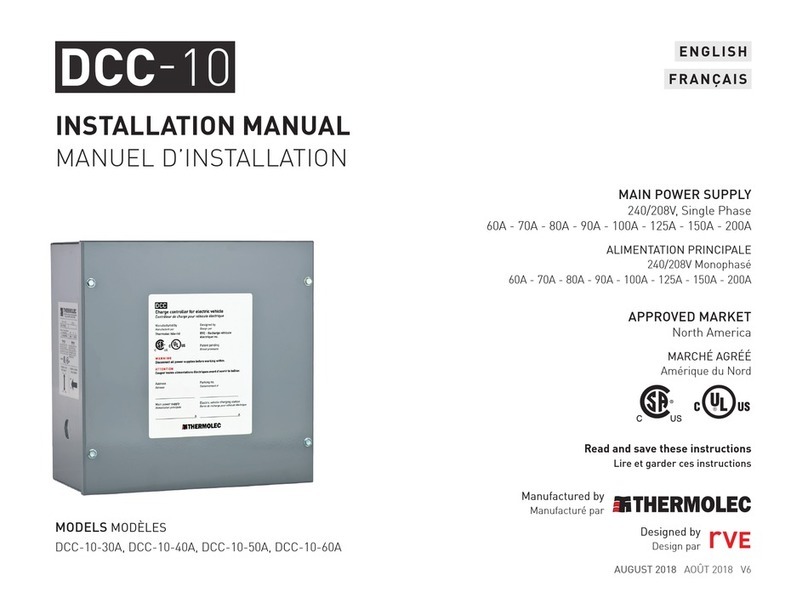
Thermolec
Thermolec DCC-10 series installation manual
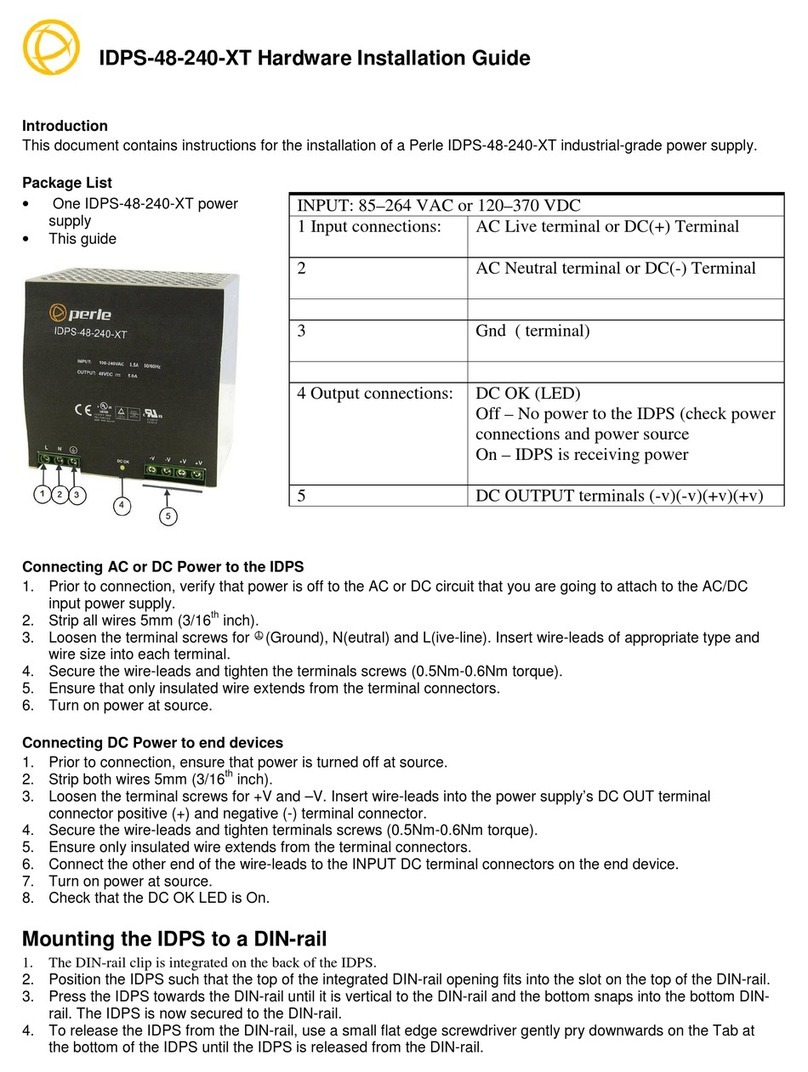
Perle
Perle IDPS-48-240-XT Hardware installation guide
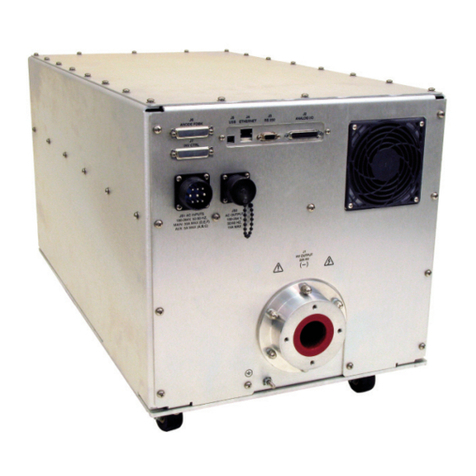
Spellman
Spellman XRV160*1800 instruction manual
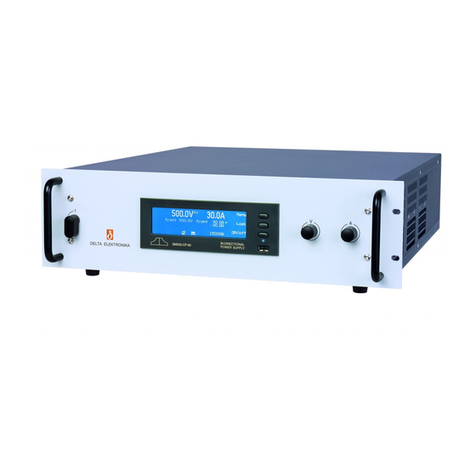
Delta Elektronika
Delta Elektronika SM15K Series quick start

Black & Decker
Black & Decker START-IT User's manual & warranty information

